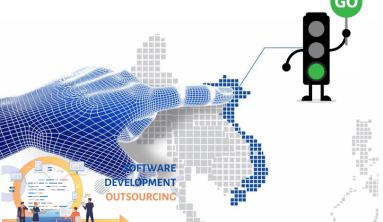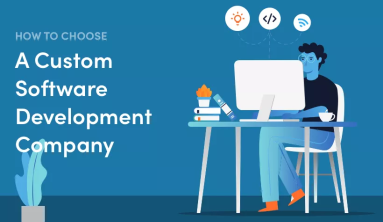One of the biggest mistakes an IT organization can make when outsourcing is failing to consider the total cost of the relationship — including all the hidden costs that are likely to accrue. Historically, there has been little incentive for service providers to bring these looming financial risks out into the open, so customers must be diligent about identifying these additional expenses in order to manage or eliminate them.
“Motivated customers can take this a step further and press their potential providers for greater transparency in the sourcing process. If you want to avoid unexpected costs cropping up, push your vendor to be clear about what’s included and what to expect if the engagement flexes or scales,” says Phil Fersht, CEO of outsourcing advisory and research firm HfS Research. “More importantly, the whole industry needs to get past its transactional heritage and start pushing towards genuine partnerships that are invested in mutual success.”
Veteran IT leaders understand this. But these issues have only gotten thornier. Outsourcing customers and their providers have shifted from traditional software and infrastructure solutions to cloud and everything-as-a-service. Moreover, new ways of working have been adopted to enable agile digital transformation. Add to all that the unprecedented disruption of a global pandemic.
“As most of the hidden costs are more nuanced and exaggerated than they were two years ago, it is even more critical to ensure recipients understand the impacts, know how they manifest, and ensure there is familiarity with the desired outcomes,” says Craig Wright, managing director with business transformation and outsourcing advisory firm Pace Harmon.
As always, the onus is on the buyer to beware. To that end, here are some of the most common hidden costs likely to emerge during the course of an outsourcing engagement today.
1. Unanticipated disruption
The COVID-19 crisis highlighted the cost of unexpected and dramatic change that no outsourcing agreements had accounted for.
“As work-from-home became the mandate across the globe, enterprises didn’t just have to accommodate their own staff, but also had to deal with the fallout from their providers,” says Lois Coatney, partner and president of supplier governance and risk management platform ISG GovernX. “Project timelines had to be extended, delivery was negatively impacted, and enterprise control was compromised. It was rapidly apparent that unless there were clear, relevant continuity plans in place, business was going to be impacted.”
2. Organizational change management
In many outsourcing engagements, the role of the retained technology resources is evolving along with the IT organization’s realignment around business outcomes and product centricity.
“In addition to the continued need to onboard and maintain supplier relationship management skills, there is now a need for upskilling and adopting new ways of working with outsourcing providers as design thinking and agile DevSecOps define the new world of IT,” Wright says. “The cost to onboard the necessary skills, orient managed services providers, and restructure essential controls is significant and not contemplated in most outsourcing agreements.”
3. Unnecessary change orders
When you have fixed internal staff, they often pick up the special projects and changes to how work is to be performed on the margin at no additional costs. Not so in the outsourcing environment. There is nothing worse than having to ask your CFO to sign a $5 million check for change orders long after an outsourcing contract is signed. “I have seen executives lose their jobs over this,” Fersht says.
To avoid death by change order, “you need to be attuned to being charged for every minor change in requirement or small effort,” says Bob Cecil, principal in KPMG‘s Shared Services and Outsourcing Advisory practice.
4. Lax demand management
The approval processes for new IT services must be defined and followed particularly as lines between business and IT have blurred. “Many clients suffer from scope creep because new services are easier to request,” says Randy Wiele, managing director at KPMG’s Shared Services and Outsourcing Advisory practice.
5. Consulting creep
“Most clients tell us it’s the cost of consulting during engagements that send costs spiraling unpredictably,” says Ollie O’Donoghue, research director for IT services at HfS Research. “Almost all digital and IT engagements are now consulting-led, which is pushing up costs.”
Even as other areas of IT service have embraced outcome-based pricing, consulting is still largely charged on a time and materials basis. “This can be jarring for clients expecting engagements to be priced in a certain way,” says Jamie Snowdon, chief data officer with HfS Research. While some enterprises will appreciate the increased value they get from getting their engagements right the first time, others will find the additional cost hard to justify.
6. Insufficient governance
“Without effective governance, many new services are not fully achieved,” says Wiele. “This is more about value loss than additional cost, but the end result is as negative.”
Regardless of the strength of the contract, effective outsourcing hinges on defining, perfecting, and implementing not just new processes but also the roles for process owners and stewards, says Wright. “The ongoing commitment to establishing and maturing these processes, capabilities, and roles can be a significant cost overlooked by clients.”
As the COVID-19 pandemic unfolded, enterprises with insufficient governance have faced the toughest consequences. “Lack of investment in governance resulted in exponential cost to right-size or adapt delivery,” says Coatney.
Important information, such as which providers were delivering the most impacted services, where those services were being delivered and at what price, and what the business continuity plans were, was difficult to find. “Lack of data and protocols to manage provider relationships caused costly delays and churn,” Coatney says.
7. Third-party risk
Closely related to governance, third-party risk should be highlighted and calculated as a cost unto itself.
“COVID-19 highlighted the risk enterprises bear of having a diverse set of providers in an environment,” says Coatney. “Information security, provider sustainability, and geographic and socio-economic factors impact an enterprise’s ability to maintain reliable service. Relationships with providers are critical to an enterprise’s ability to innovate and scale, but additional precautions and controls are required to mitigate risk.”
8. Failure to innovate
Some companies find themselves locked into a traditional sourcing model at a time of dynamic change — and locked out of new technology opportunities like AI, robotics, or blockchain, for example.
“In addition, companies are eagerly looking to update their existing sourcing relationships to support mobility, data analytics, or other components of their digital strategy,” Masur says. “Weaving these changes into an existing outsourcing relationship may be difficult, time consuming, and costly.”
Companies must also ensure that they actually benefit from any innovative solutions the provider does embrace. “Particularly in today’s world of advanced process automation, you need to be careful that the service provider is, first, incented to innovate on your behalf and, second, will pass on those innovation savings to you,” says Cecil.
Governance comes into play here as well. “Losing out on innovation is a direct outcome of poor governance and often results in perpetuating suboptimal operating, cost, and performance models that add unexpectedly to the overall cost to serve a business,” Wright says.
9. Aspirational services
An outsourcing contract is drafted at a single point in time based on what a client believes they will need over the ensuing years. “However, client leaders change, the business evolves, and, frankly, what may have sounded good at the outset may not be needed in reality,” says Coatney. Someone must make sure that suppliers are actually delivering what was hoped for — and paid for — in the contract and eliminate those services that are not actually necessary.
ISG estimates that a contract loses 5 to 15 percent of its value simply by paying for more than what is actually delivered. “Buyers can prevent this by outlining the most important or costly deliverables and obligations within a contract and track their delivery over the life of the agreement,” Coatney says. “They should continually look for opportunities to reduce cost through the elimination of less important services and using the savings to trade up for new services.”
10. Retooling for intelligent automation
“The costs of investments in automation and AI are very frequent these days as uptake of technologies like RPA and process mining are increasingly essential to drive efficiencies in the rapid move to digital environments,” Fersht says.
IT service providers have a host of new capabilities that can improve user experience, reduce costs, and improve quality. “However, what is often overlooked is the switching cost and the associated reengineering and integration necessary to establish equivalent levels of efficiency in a new provider’s AI and robotics toolset,” Wright says.
Standard disengagement services typically do not oblige an incumbent outsourcing provider to document the workflows, business rules, logic, and complex algorithms that are implemented in their proprietary toolsets. “Consequently, it is often an engineering do-over and an unplanned cost to re-create, train, and validate the effectiveness of a new outsourcing provider’s integrated toolset,” Wright says.
11. Knowledge loss
Knowledge transfer and employee retention during the transition period and beyond is critical. “Ineffective knowledge transfer or high attrition from the service provider can result in loss of institutional knowledge which may never be recovered,” says Wiele. “This can increase cost of delivery via bad decision-making or missed opportunities to improve processes.”
12. Duplication of work
When problems arise, the first instinct of new IT outsourcing customers is to fix it themselves rather than allow the supplier to take accountability to fix it, Coatney says. This leads to the client retaining more staff than needed and to the duplication of effort. “Be sure the roles of the retained staff have a clear remit that does not duplicate the responsibilities of the supplier,” Coatney advises. There can also be value loss if some business units opt out of the outsourced services altogether, says Cecil.
13. Employee disengagement
“Outsourcing providers rarely address transition risks and impacts other than those directly affecting their own scope of services, so the impacts on the retained organization are often overlooked,” says Wright of Pace Harmon.
In first generation outsourcing deals, IT employees will need to transition from doing the work to managing it. “For deep technical resources this can be an unwelcome change in focus and they may feel out of touch if they can no longer get their hands under the hood,” Wright says. “As a result, attrition levels may increase and require unplanned hiring and training charges.”
14. Provider integration
Outsourcing providers deploy specific tools for management and expect their customers to adopt them as well. “Many organizations fail to realize that the introduction of vendor tools require retained resource and super user training to be effective and efficient,” says Wright. “[In addition], most IT environments have customizations to accommodate business differentiators and unique business models. Consequently, this often requires an investment in custom integrations.”
What’s more, customers that haven’t previously cleansed master and transactional data will have to do so to use the new tools most effectively. “Even if discovery tools are deployed, do not underestimate the cost of cleansing data and maintaining referential integrity on an ongoing basis,” Wright says.
15. Regulatory requirements
The global proliferation of privacy and cybersecurity legislation creates challenges for all companies, notes Mayer Brown’s Masur, but an outsourcing provider’s service delivery solution can exacerbate a company’s compliance challenges when the provider processes or stores its data in new or different geographies. “An outsourcing customer must pay close attention to whether the proposed service delivery solution will require it to incur the cost of complying with privacy or cybersecurity requirements it would not otherwise be subject to or expose it to potential liability in such jurisdictions,” says Masur.
16. Bubble costs
During any outsourcing transition, most providers will propose secondary and primary support periods, and customers can anticipate significant disengagement charges as existing service providers perform knowledge transfer and support the new outsourcing provider.
“In addition to the transition charges, the new provider often expects to be paid for ‘run charges’ resulting in a client paying for disengagement of the current supplier, adding the new providers transition charges, and paying both providers’ run charge,” says Wright. These are known as transition “bubble costs.”
“Look to establish deals with the provision to ramp down incumbent services and provide knowledge transfer and other typical disengagement services without incremental incumbent vendor charges,” advises Wright. “Also, when sourcing the new provider, set the expectation in the RFP and at all subsequent stages that run charges prior to the full service commencement date will not be allowed.”
Newer bubble costs are emerging, as organizations migrate from traditional software, platform, and infrastructure solutions to cloud solutions.
“This happens as new services are stood-up on a subscription and consumption basis, without any relief from the legacy cost of incumbent providers, on-premise, or co-lo facilities, hardware, and software,” Wright says. “Those legacy costs remain until the organization transforms operations to adopt the new solutions exclusively.”
Besides the dual costs of running new and old concurrently for a defined period during transition, the actual decommissioning and exit costs defined within agreements and potential loss of volume discounts and rebates are often overlooked. With the ease of cloud migration it is easy to concentrate on the shiny new object and forget about the inconvenient burden and effort to exit from the old world.”
Source: cio.com






